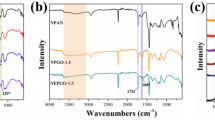Abstract
Electrospun nanofiber hybrid membranes have superior membrane performance due to their high specific surface area, narrow pore size, high porosity, and uniform pore size. Recently, increasing attention has been given to hydrophilic membranes such as polyamide 6 (PA6) in applications microfiltration and reverse osmosis. Electrospun PA6 nanofiber hybrid membranes have not found any real application due to their poor mechanical strength under high pressure. In this study, PA6 nanofiber layer was prepared using wire electrospinning method. Three supporting material with different adhesion method has been used to improve the mechanical properties of the membranes. Membranes were characterized with Scanning Electron Microscope images, pore size, and contact angle measurements. Tensile strength and the delamination tests were run to measure the mechanical properties of the membranes. Three types of wastewater were carried out during filtration; using real wastewater supplied from a company which consists of pitch and tar oils, engine oil/water mixture and kitchen oil/water mixture. Results indicated that the adhesion method and the supporting layer played a big role in the permeability of the membranes. The PA6 nanofiber hybrid membranes exhibited high water fluxes in even at low pressures which indicate that electrospun nanofiber membranes might be highly promising for microfiltration applications.
Similar content being viewed by others
References
W. C. Chong, E. Mahmoudi, Y. T. Chung, M. M. BaAbbad, C. H. Koo, and A. W. Mohammad, Desalin. Water Treat., 96, 12 (2017).
L. Yan, Y. S. Li, and C. B. Xiang, Polymer (Guildf), 46, 7701 (2005).
A. Bottino, G. Capannelli, V. D’Asti, and P. Piaggio, Sep. Purif. Technol., 22-23, 269 (2001).
W. Chen, Y. Su, L. Zhang, Q. Shi, J. Peng, and Z. J. Jiang, Memb. Sci., 348, 75 (2010).
K. Ebert, D. Fritsch, J. Koll, and C. J. Tjahjawiguna, Memb. Sci., 233, 71 (2004).
G. Arthanareeswaran, T. Sriyamunadevi, and M. Raajenthiren, Sep. Purif. Technol., 64, 38 (2008).
, S. Kuypers, and R. Leysen, J. Membr. Sci., 113, 343 (1996).
Y. Ko, Y. Choi, Y. Jang, J. Choi, and S. Lee, Desalin. Water Treat., 97, 87 (2017).
M. J. A. A.Shirazi, S. Bazgir, M. M. A. A.Shirazi, and S. Ramakrishna, Desalin. Water Treat., 51, 5974 (2013).
D. Bjorge, N. Daels, S. De Vrieze, P. Dejans, T. Van Camp, W. Audenaert, J. Hogie, P. Westbroek, K. De Clerck, and S. W. H. Van Hulle, Desalination, 249, 942 (2009).
F. Yalcinkaya and J. Hruza, J. Nanomaterials, 8, 272 (2018).
B. Yalcinkaya, F. Yalcinkaya, and J. Chaloupek, J. Nanomater., Article No. 2694373, 2016 (2016).
F. Yalcinkaya, Arab.J. Chem., doi:10.1016/j.arabjc.2016.12.012 (2016).
B. Yalcinkaya, F. Yalcinkaya, and J. Chaloupek, Desalin. Water Treat., 59, 19 (2017).
M. Aiba, K. Ito, T. Tokuyama, H. Tomioka, T. Higashihara, M. Ueda, and H. Matsumoto, Macromol. Chem. Phys., 219, 1 (2018).
S. Konagaya and M. Tokai, J. Appl. Polym. Sci., 76, 913 (2000).
J. Meier-Haack, M. Valko, K. Lunkwitz, and M. Bleha, Desalination, 163, 215 (2004).
S. Wu, J. Adhes., 5, 39 (1973).
A. Ahagon and A. N. Gent, J. Polym. Sci. Polym. Phys. Ed., 7, 1285 (1975).
E. Helfand and Y. J. Tagami, Chem. Phys., 56, 3592 (1971).
B. V. Derjaguin, N. A. Krotova, V. V. Karassev, Y. M. Kirillova, and I. N. Aleinikova, Prog. Surf. Sci., 45, 95 (1994).
H. W. Kammer, Acta Polym., 34, 112 (1983).
A. Kinloch, “Adhesion and Adhesives: Science and Technology”, p.18, Springer Netherlands: Dordrecht, 1987.
Y. Zhu, D. Wang, L. Jiang, and J. Jin, NPG Asia Mater., Article No. e101, 6 (2014).
K.-H. Choo and C.-H. Lee, J. Colloid Interface Sci., 226, 367 (2000).
F. Y. Guo, P. C. Sun, and J. F. Wei, Environ. Technol. (United Kingdom), 39, 3159 (2018).
Author information
Authors and Affiliations
Corresponding author
Rights and permissions
About this article
Cite this article
Yalcinkaya, F., Yalcinkaya, B. & Hruza, J. Electrospun Polyamide-6 Nanofiber Hybrid Membranes for Wastewater Treatment. Fibers Polym 20, 93–99 (2019). https://doi.org/10.1007/s12221-019-8820-4
Received:
Revised:
Accepted:
Published:
Issue Date:
DOI: https://doi.org/10.1007/s12221-019-8820-4




